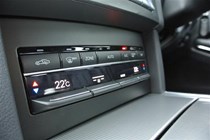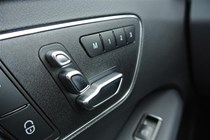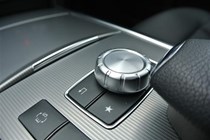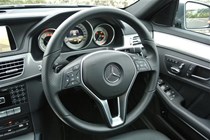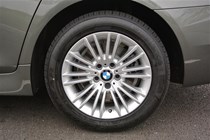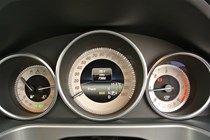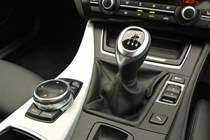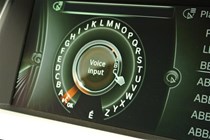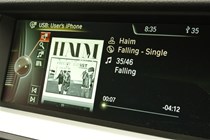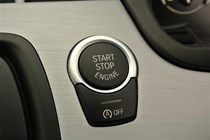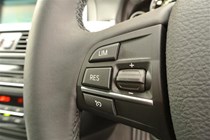Matched efficiency but less power may seem like a false economy where the new BMW 518d SE is concerned – versus the popular 520d – but a lower P11D price makes it much more attractive to company car users. We see if the saving is enough for it to build on the 520d’s success and take on the Mercedes E220CDI SE at its own game.
Driving
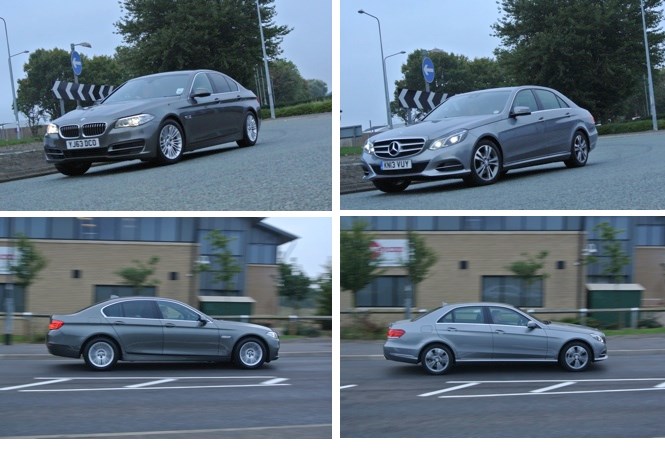
With an extra 27bhp (168bhp) it’s no surprise that the Mercedes has the legs on the BMW in the acceleration stakes, but it’s only the slowly disappearing tail of the E-Class in front that gives the game away.
The BMW engine is far quieter, at idle and on the move, and though it takes longer to get there you soon find yourself travelling faster than expected in the 518d on account of its greater refinement. Both are relatively hushed at motorway speeds, the E220 CDI’s seven-speed automatic gearbox meaning it revs slightly lower at the legal limit, but if we had to choose one for a long distance commute it’d be the BMW.
The same goes for when you venture off the heavily beaten path that is the British motorway network, the 518d feeling much more connected to both the driver and the road than the slightly vague Mercedes. Even with more supple suspension – the Mercedes occasionally feels a little brittle – the BMW has tighter body control, though our example did benefit from the excellent, but optional, Variable Damper Control at £985.
You could spec a superb eight-speed automatic gearbox for the 518d without CO2 or economy penalty, for another £1,550, but the manual is an excellent ‘box with a mechanical and slick action that adds to the experience. Not so the Mercedes, which should really only be ordered with the seven-speed automatic. Its smooth enough to shift, if not always quick enough, and suits the car’s relaxed nature.
Costs
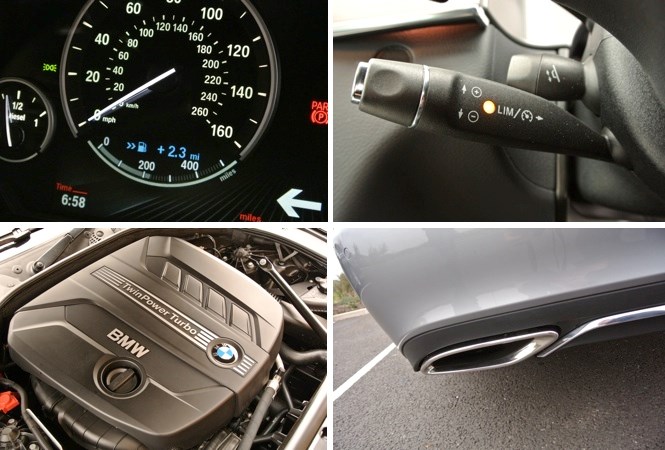
Pitching a manual against an automatic isn’t the fairest of tests but whatever box you order these cars with the BMW has a cheaper P11D price. Levelling the playing field for a moment an automatic 518d SE is £31,325 (£2,890 more than the auto Mercedes) and 20 percent tax payers will have to stump up £94 a month thanks to its 18 percent BIK rating.
Mercedes E220 CDI drivers will feel the pinch thanks to its 19 percent BIK rating and fork out £108 a month instead, and even those who’ve ordered the manual will pay £104. Stick with the manual BMW as we have here and monthly figures are only £89 for lower rate payers and £179 for those on the higher rate.
Whatever way you cut it the BMW is the cheaper car to run as a company car user.
Mercedes’s drivers will have to stop for fuel more often too, the E220CDI officially capable of 58.9mpg versus the 62.8mpg figure of the 518d, a gulf of around 4mpg that was born out in our real world test figures as well. And with its 70-litre tank the BMW will theoretically travel over 960 miles between fills, while the Mercedes will have to stop around 200 miles sooner thanks to its 11-litre lower capacity.
Just like the mechanicals there’s no doubting these cars have been closely benchmarked when it comes to specification; each comes with leather seats, sat-nav, climate control, DAB radio, Bluetooth connectivity, front and rear parking sensors, cruise control and 17-inch alloy wheels from the off. The BMW also comes with part electric seats and Xenon headlights, while the sat-nav and infotainment graphics feel far more grown up than the basic-looking display in the Mercedes too.
Design
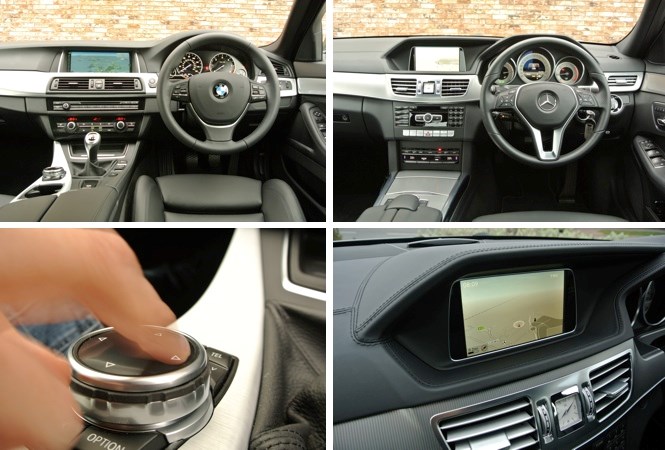
If you’re simply out to impress the car park crowd at the office then these SE models won’t cut the mustard; for that you’ll need the more expensive M Sport or Sport models. It’s an effect not helped by our cars’ rather dull grey paintwork.
That said the 518d looks the most avant-garde, with a mixture of creases and curves interspersed with traditional BMW design details. A recent facelift has improved the look of the Mercedes, its new face much more integrated, but the overall effect is still slightly old-fashioned.
The same could be said for the interior, which doesn’t disappoint for build quality but for flair, the design just looks a little basic – especially the instruments and sat-nav. And while its logically laid out, the Comand system isn’t as instantly intuitive as the BMW’s i-Drive and much of it is indistinguishable from lesser Mercedes models.
With its driver focused layout, precise switchgear and softer surfaces the BMW feels much more modern and we particularly like the way you can trace letter and number inputs directly onto the I-Drive controller surface for sat-nav or phonebook entry – even if it is part of the optional Professional Media Package (£1,290).
Verdict

In a test purely driven by money and costs the BMW wins hands down; it has a cheaper P11D price, higher economy, a lower tax rate and slightly better equipment levels. For a company user it ticks every one of the required boxes.
Even without the cost considerations though the Mercedes can’t match it for looks, driving appeal or comfort and while the E220CDI is still a sound choice in this tough sector, the new BMW 518d SE is without doubt king of the company car park once again.
You can read our BMW 5 Series full review here or Mercedes E-Class full review here.
To work out your company car tax costs visit the Parkers Company Car Tax calculator here.
Just so you know, we may receive a commission or other compensation from the links on this website - read why you should trust us.





